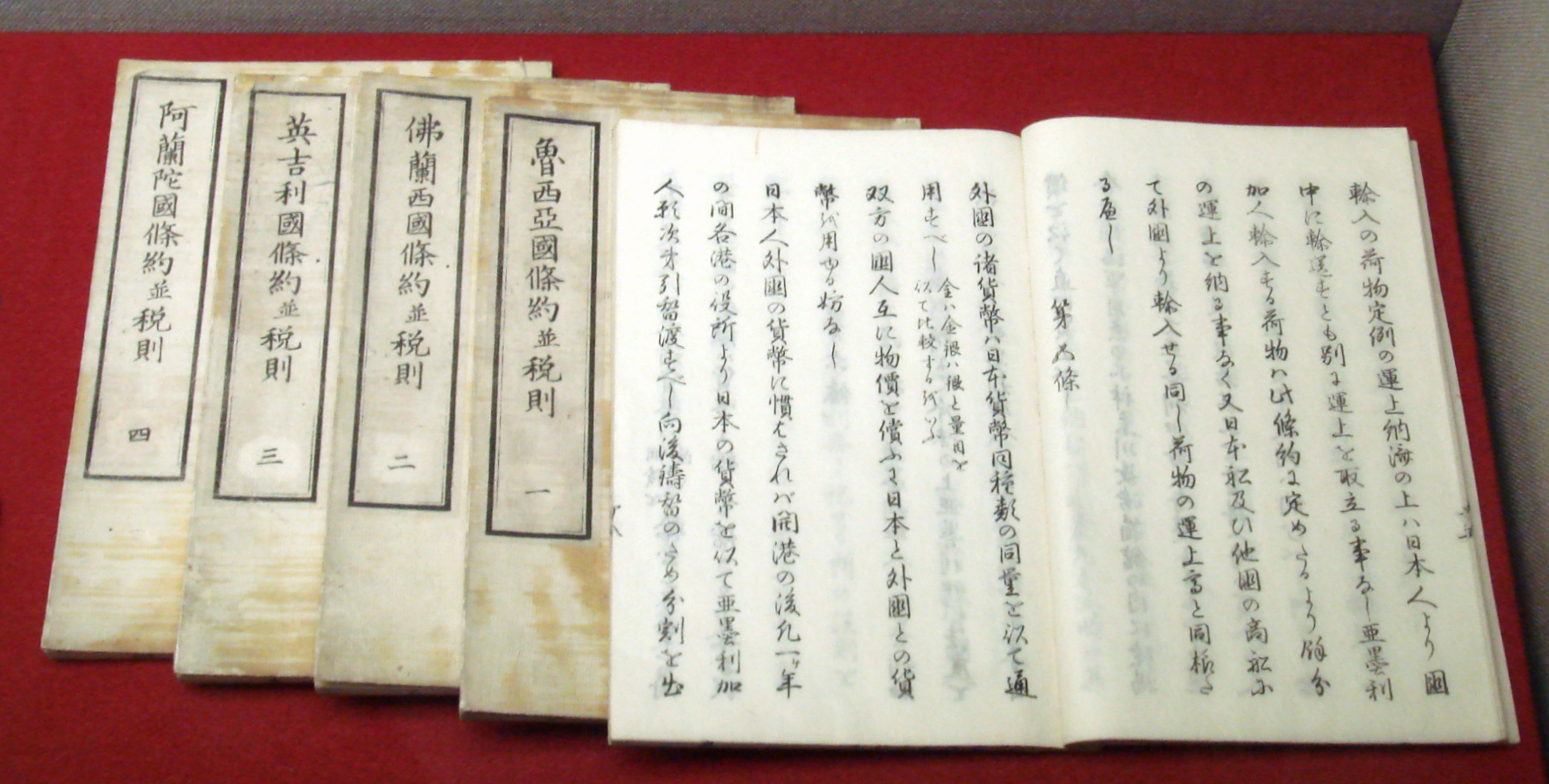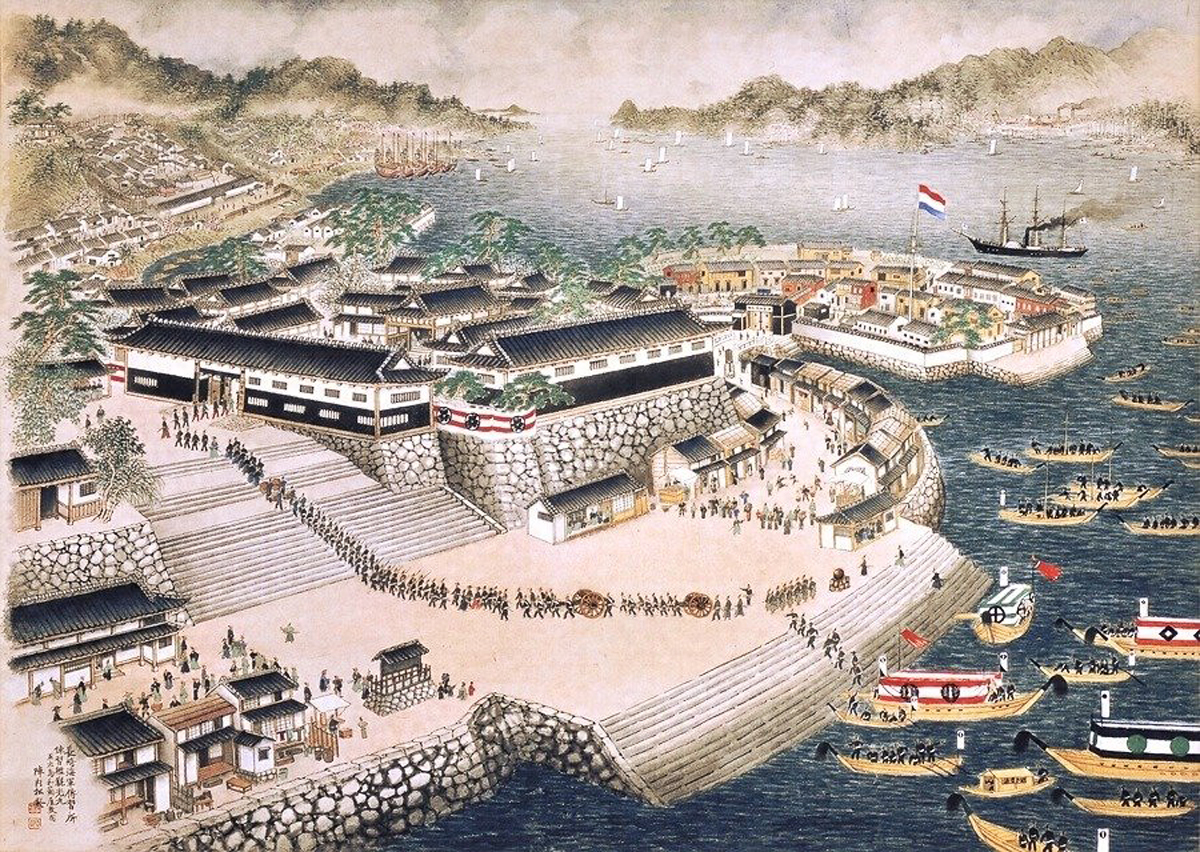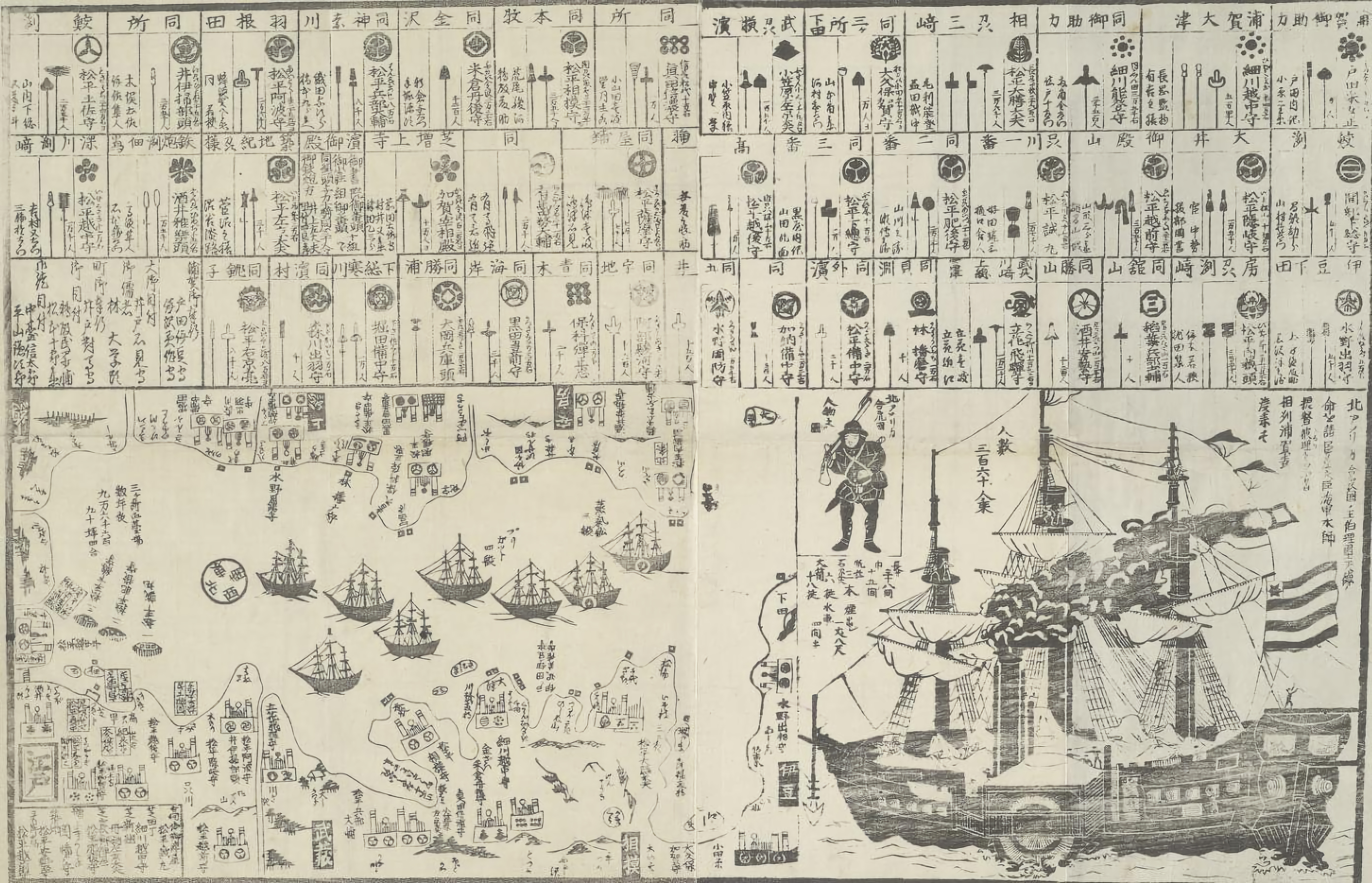|
Nagai Naoyuki
, also known as or , was a Japanese hatamoto under the Tokugawa of Bakumatsu period Japan. His great-great-grandchild was Yukio Mishima. Naoyuki's adopted son, Iwanojō Nagai, was the father of Natsu, who was Mishima's grandmother. Iwanojō's real father was Nagasumi Miyoshi (Miyoshi clan) who was a Tokugawa retainer."Persona: A Biography of Yukio Mishima" (Naoki Inose, Hiroaki Sato) (Stone Bridge Pr 2012)”Final edition-Yukio Mishima complete works No.42-Biographical sketch and Bibliography” (published by Shinchosha, 2005). Japanese title "決定版 三島由紀夫全集・第42巻・年譜・書誌" (Ketteiban Mishima Yukio Zenshu Dai42kan Nenpu・Shoshi) (新潮社、2005年) p.9"Yukio Mishima-The locus of his literature" (Tomoko Etsugu) (published by Kōronsha, 1983). Japanese title "三島由紀夫 文学の軌跡" (Mishima Yukio Bungaku no kiseki) (広論社、1983年) pp.101-107, pp.232-233 Early life Nagai Naoyuki, or as he was first known, , was born in the Nukada d ... [...More Info...] [...Related Items...] OR: [Wikipedia] [Google] [Baidu] |
Mikawa Province
was an old province in the area that today forms the eastern half of Aichi Prefecture. Nussbaum, Louis-Frédéric. (2005). "''Mikawa''" in . Its abbreviated form name was . Mikawa bordered on Owari, Mino, Shinano, and Tōtōmi Provinces. Mikawa is classified as one of the provinces of the Tōkaidō. Under the ''Engishiki'' classification system, Mikawa was ranked as a "superior country" (上国) and a "near country" (近国) in terms of its distance from the capital. History Mikawa is mentioned in records of the Taika Reform dated 645, as well as various Nara period chronicles, including the Kujiki, although the area has been settled since at least the Japanese Paleolithic period, as evidenced by numerous remains found by archaeologists. Early records mention a "Nishi-Mikawa no kuni" and a "Higashi-Mikawa no kuni", also known as . Although considered one administrative unit under the ''Engishiki'' classification system, this division (roughly based at the Yasaku River) pe ... [...More Info...] [...Related Items...] OR: [Wikipedia] [Google] [Baidu] |
Ansei Treaties
The Ansei Treaties (Japanese:安政条約) or the Ansei Five-Power Treaties (Japanese:安政五カ国条約) are a series of treaties signed in 1858, during the Japanese Ansei era, between Japan on the one side, and the United States, Great Britain, Russia, Netherlands and France on the other.Auslin, p.1 The first treaty, also called the Harris Treaty, was signed by the United States in July 1858, with France, Russia, Britain and the Netherlands quickly followed within the year: Japan applied to the other nations the conditions granted to the United States under the "most favoured nation" provision. Content The most important points of these "unequal treaties" are: * Exchange of diplomatic agents. * Edo, Kobe, Nagasaki, Niigata, and Yokohama’s opening to foreign trade as ports. * Ability of foreign citizens to live and trade at will in those ports (only the opium trade was prohibited). * A system of extraterritoriality that provided for the subjugation of foreign residents ... [...More Info...] [...Related Items...] OR: [Wikipedia] [Google] [Baidu] |
Gaikoku Bugyō
were the commissioners or "magistrates of foreign affairs" appointed at the end of the Edo era by the Tokugawa shogunate to oversee trade and diplomatic relations with foreign countries. In essence this was the beginning of the creation of a Ministry of Foreign Affairs after Japan's long period of isolationist policy. Historical background The ''Gaikoku bugyō'' system began just prior to the negotiations which resulted in the Harris Treaty. First appointed in August 1858, the ''gaikoku-bugyō'' were shogunate officials who were charged with advising the government on foreign affairs and who were tasked with conducting negotiations with foreign diplomats both in Japan and abroad.Nussbaum, Louis-Frédéric. (2005). "''Gaikoku bugyō''" in ; n.b., Louis-Frédéric is pseudonym of Louis-Frédéric Nussbaum, ''see'Deutsche Nationalbibliothek Authority File This was a high-ranking office, in status roughly equivalent to that of ''kanjō-bugyō'', or expressed differently, the statu ... [...More Info...] [...Related Items...] OR: [Wikipedia] [Google] [Baidu] |
Iwase Tadanari
Iwase may refer to: Places * Iwase Province * Iwase, Fukushima * Iwase, Ibaraki * Iwase District, Fukushima is a district located in Fukushima Prefecture, Japan. As of 2003, the district has an estimated population of 31,847 and a density of 83.50 persons per km2. The total area is 381.38 km2. Towns and villages * Kagamiishi *Ten'ei Merger * On ... * Iwase Dam * Iwase Station Other uses * Iwase (surname) {{disambiguation ... [...More Info...] [...Related Items...] OR: [Wikipedia] [Google] [Baidu] |
Kankō Maru
was a after ''Chōhō (era), Chōhō'' and before ''Chōwa.'' This period spanned the years from July 1004 through December 1012. The reigning emperors were and . Change of Era * 1004 : The era name was changed to mark an event or series of events. The previous era ended and a new one commenced in ''Kankō'' 6, on the 20th day of the 7th month of 1004. Events of the ''Kankō'' Era * March 17, 1008 (''Kankō 5, 8th day of the 2nd month''): The former-Emperor Kazan died at the age of 41. * July 16, 1011 (''Kankō 8, 13th day of the 6th month''): In the 5th year of Emperor Ichijō's reign (一条天皇5年), he abdicated; and the succession (‘‘senso’’) was received by his cousin. Shortly thereafter, Emperor Sanjō is said to have acceded to the throne (‘‘sokui’’). * July 15, 1011 (''Kankō 8, 22nd day of the 6th month ''): ''Daijō-tennō'' Emperor Ichijo, Ichijō died at the age of 32. * November 21, 1011 (''Kankō 8, 24th day of the 10th month''): ''Daij� ... [...More Info...] [...Related Items...] OR: [Wikipedia] [Google] [Baidu] |
Katsu Kaishū
Count , best known by his nickname , was a Japanese statesman and naval engineer during the late Tokugawa shogunate and early Meiji period. Kaishū was a nickname which he took from a piece of calligraphy (Kaishū Shooku ) by Sakuma Shōzan. He went through a series of given names throughout his life; his childhood name was . He was often called from his title during the late Tokugawa shogunate and later changed his name to Yasuyoshi after the Meiji Restoration. Katsu Kaishū eventually rose to occupy the position of commissioner ''(Gunkan-bugyō)'' in the Tokugawa navy. He is particularly known for his role in the surrender of Edo. Early life Born Katsu Yoshikuni on March 12, 1823, in Edo to a low-ranking retainer of the Tokugawa ''shōgun''. His father, Katsu Kokichi, the subject of the autobiography, '' Musui's Story'', was the ill-behaved head of a minor ''samurai'' family. As a youth whose given childhood name as Katsu Rintarō (Kaishu was a pseudonym), he studied Du ... [...More Info...] [...Related Items...] OR: [Wikipedia] [Google] [Baidu] |
Nagasaki Naval Training Center
The was a naval training institute, between 1855 when it was established by the government of the Tokugawa shogunate, until 1859, when it was transferred to Tsukiji in Edo. During the Bakumatsu period, the Japanese government faced increasing incursions by ships from the Western world, intent on ending the country's two centuries of isolationist foreign policy. These efforts cumulated in the landing of United States commodore Matthew Perry in 1854, resulting in the Treaty of Kanagawa and the opening of Japan to foreign trade. The Tokugawa government decided to order modern steam warships and to build a naval training center as part of its modernization efforts to meet the perceived military threat posed by the more advanced Western navies. History The training center was established near the Dutch settlement on the artificial island Dejima in Nagasaki, where maximum interaction with Dutch naval technology would be possible. Nagai Naoyuki was appointed the first director wi ... [...More Info...] [...Related Items...] OR: [Wikipedia] [Google] [Baidu] |
Metsuke
were the censors or the inspectors of Tokugawa shogunate. They were ''bakufu'' officials ranking somewhat lower than the ''bugyō.'' The ''metsuke'' were charged with the special duty of detecting and investigating instances of maladministration, corruption or disaffection anywhere in Japan, and particularly amongst the populace having status below the ''daimyō''.Beasley, William G. (1955). ''Select Documents on Japanese Foreign Policy, 1853–1868'', p. 326. Intelligence gathering The shogunate recognized the need for some kind of internal intelligence-gathering apparatus and for some degree of covert espionage within its own ranks. It could be said that the ''metsuke'' functioned as the Shogun's intelligence agency or as internal spies, reporting to the officials in Edo on events and situations across the country.Cunningham, Don. (2004) ''Taiho-jutsu: Law and Order in the Age of the Samurai,'' p. 39./ref> The ''metsuke'' were charged with focusing on those ranking below ''da ... [...More Info...] [...Related Items...] OR: [Wikipedia] [Google] [Baidu] |
Sakoku
was the isolationist foreign policy of the Japanese Tokugawa shogunate under which, for a period of 265 years during the Edo period (from 1603 to 1868), relations and trade between Japan and other countries were severely limited, and nearly all foreign nationals were banned from entering Japan, while common Japanese people were kept from leaving the country. The policy was enacted by the shogunate government (or ) under Tokugawa Iemitsu through a number of edicts and policies from 1633 to 1639, and ended after 1853 when the Perry Expedition commanded by Matthew C. Perry forced the opening of Japan to American (and, by extension, Western) trade through a series of treaties, called the Convention of Kanagawa. It was preceded by a period of largely unrestricted trade and widespread piracy. Japanese mariners and merchants traveled Asia, sometimes forming communities in certain cities, while official embassies and envoys visited Asian states, New Spain (known as Mexico sinc ... [...More Info...] [...Related Items...] OR: [Wikipedia] [Google] [Baidu] |
Perry Expedition
The Perry Expedition ( ja, 黒船来航, , "Arrival of the Black Ships") was a diplomatic and military expedition during 1853–1854 to the Tokugawa Shogunate involving two separate voyages by warships of the United States Navy. The goals of this expedition included exploration, surveying, and the establishment of diplomatic relations and negotiation of trade agreements with various nations of the region; opening contact with the government of Japan was considered a top priority of the expedition, and was one of the key reasons for its inception. The expedition was commanded by Commodore Matthew Calbraith Perry, under orders from President Millard Fillmore. Perry's primary goal was to force an end to Japan's 220-year-old policy of isolation and to open Japanese ports to American trade, through the use of gunboat diplomacy if necessary. The Perry Expedition led directly to the establishment of diplomatic relations between Japan and the western Great Powers, and eventually to ... [...More Info...] [...Related Items...] OR: [Wikipedia] [Google] [Baidu] |




